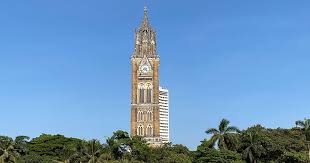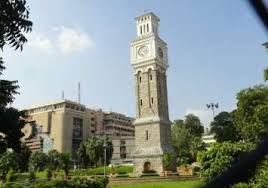
Clock Tower Returns
Historic Clock Tower Returns to City Pride and Heritage Glory
Clock Tower – The return of a historic clock tower has stirred emotions, nostalgia, and civic pride in the community. Once a landmark that defined the city’s skyline and rhythm of daily life, the clock tower had fallen into disrepair before being removed for restoration. Now, with its return, citizens, heritage experts, and city planners are celebrating the revival of not just a structure but a powerful symbol of culture, history, and continuity.

This article explores the background of the clock tower, the challenges of restoration, public reactions, and the broader implications for heritage conservation.
Background: A Landmark Lost and Found
The clock tower was originally built in the late colonial era, serving as both a functional timekeeper and a civic monument. Its chimes marked the passing hours, becoming part of the city’s collective memory. Over time, neglect, weather damage, and lack of maintenance led to its decline. Eventually, it was dismantled amid public disappointment, with authorities promising that restoration efforts would bring it back stronger.
Its return today represents not just the completion of a project but the restoration of a city’s identity.
The Restoration Journey
Restoring a century-old structure is no small feat. Conservation architects and engineers worked meticulously to preserve original materials while reinforcing structural stability.
Key restoration highlights include:
- Clock Mechanism Repair – Original gears, bells, and hands were carefully repaired or replicated.
- Architectural Conservation – Stonework and carvings were cleaned, polished, and weatherproofed.
- Modern Additions – Subtle technological upgrades, such as automated winding, ensure longevity without compromising heritage.
The project combined traditional craftsmanship with modern engineering to strike a balance between authenticity and durability.
Public Reactions: Nostalgia and Pride
The clock tower’s return has sparked overwhelming public response:
- Elderly residents recall childhood memories tied to the tower’s chimes.
- Younger generations see it as a cultural treasure rediscovered.
- Local businesses near the landmark expect an increase in footfall and tourism.
Social media platforms have been flooded with photos and stories, turning the clock tower into a trending symbol of heritage revival.
Cultural and Heritage Significance
The clock tower is more than just a timepiece; it is a testament to the city’s evolution. Heritage experts argue that such monuments:
- Anchor the identity of a place.
- Bridge generations by connecting the past with the present.
- Attract cultural tourism, boosting local economies.
Its return underscores the value of investing in conservation rather than allowing landmarks to fade into history.
Economic Impact
Restoration projects like this have ripple effects:
- Tourism Boost – Heritage attractions increase city tourism revenue.
- Urban Regeneration – The tower’s presence can uplift the surrounding neighborhood.
- Job Creation – The restoration itself provided employment for artisans, engineers, and workers.
In the long run, the clock tower’s return is expected to benefit both cultural and economic life.
Comparisons with Other Cities
Globally, cities that preserved or restored their clock towers — from London’s Big Ben to Prague’s Astronomical Clock — have reaped rewards in identity and tourism. The local clock tower’s return places the city in this tradition of valuing heritage as a civic asset.
Challenges and Criticisms
While the return has been widely celebrated, critics point to:
- Delays – The restoration took longer than promised.
- Costs – Questions remain about whether funds were efficiently used.
- Maintenance – Concerns persist about whether the tower will be maintained properly in the future.
These debates highlight the ongoing tension between heritage pride and accountability.
Voices from Experts
Anjali Deshpande, conservation architect:
“This project shows that heritage conservation is possible when civic bodies and citizens collaborate. The clock tower’s return is a victory for culture.”
Raghav Menon, historian:
“Clock towers are more than structures; they represent civic unity. Their preservation strengthens community bonds.”
The Road Ahead
For the clock tower to remain a beacon of heritage, authorities must:
- Ensure regular maintenance schedules.
- Use the landmark as an educational tool for students.
- Integrate the tower into city festivals and cultural programs.
- Encourage citizen participation in safeguarding its legacy.
Conclusion
The return of the historic clock tower is a moment of triumph for the city. It symbolizes resilience, continuity, and the enduring importance of heritage in a rapidly modernizing world. More than just telling time, the tower now tells the story of a community’s pride, struggles, and commitment to preserving its cultural identity.
As the clock ticks once again, it invites citizens to pause, reflect, and celebrate the timeless values that bind a city together.




